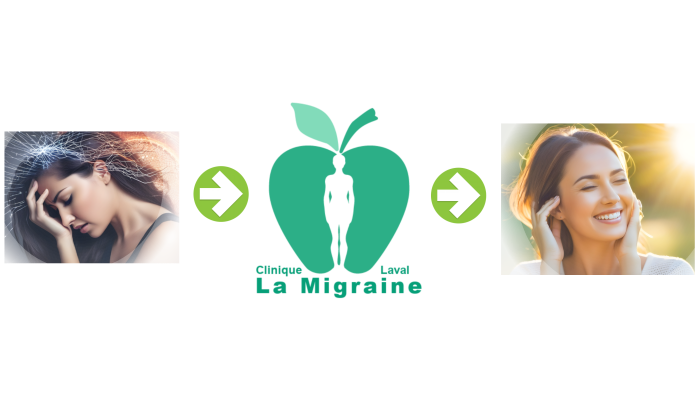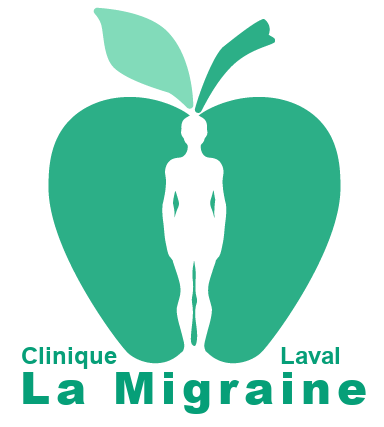We completely understand what you’re going through: Finally relieve your vestibular migraines.
Vestibular migraine is much more than just a headache. Dizziness, vertigo, instability, nausea… These symptoms can severely affect your balance, concentration, and overall quality of life. We understand how confusing and challenging this can be on a daily basis.
At the Clinic La Migraine, we have dedicated over twenty years to the study and treatment of various forms of migraines, including vestibular migraines. We understand the mechanisms, triggers, and impacts of this condition on your personal and professional life. We are here to offer you practical, tailored solutions to help you regain your balance.
>Tangible Solutions, Proven Results
-
Reduction of over 70% in the intensity, frequency, or duration of episodes in the greater majority of our patients.
-
Personalized approaches tailored to your history and lifestyle.
-
Over 20 years of proven expertise in treating chronic, hormonal, vestibular migraines, and more.
>A team that understands and supports you.
- Attentive listening to your unique situation and needs.
- Treatment plans tailored to your progress, continuously reviewed for optimal effectiveness.
- Compassionate care with Dr. Daniel Lachance, chiropractor, to help you take control of your life again.
>Don’t let vestibular migraines dictate your days any longer.
You deserve to regain serenity and freedom. Contact us today to schedule an appointment and discover how our methods can alleviate your vestibular migraines… or even make them disappear.
Contact us now or call 450-689-1223.
Life is too short to spend it in pain. Don’t wait any longer: you have the right to live fully.
Vestibular Migraine: Symptoms, Causes et Diagnosis
Synonyms: migraine-associated vertigo/ dizziness, migraine-related vestibulopathy, migrainous vertigo, silent migraine
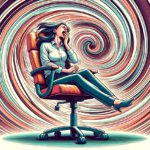
What is a Vestibular Migraine?
Vestibular migraines present a spectrum of symptoms, including double vision, intense vertigo, and balance disruptions. Often referred to as “silent migraines” (aka acephalgic migraines), they can occur without the typical headache. These episodes, affecting about 1 in 100 people during their lifetime, are more prevalent in midlife, with females five times more likely to be affected. Vestibular migraine prevalence is estimated at 1-2.7% in adults yet remains significantly underdiagnosed. The condition predominantly affects women in their late 30s to mid-40s, often preceding the onset of vestibular symptoms with a history of migraines and motion sickness.(1) Individuals who have experienced benign paroxysmal vertigo (BPV) during childhood face the possibility of developing vestibular migraines even if they have no previous history of migraine headaches.
Individuals with vestibular migraines frequently exhibit a long-standing tendency towards motion sensitivity, often experiencing car sickness in childhood and continuing to suffer from motion sickness in adulthood. The varied duration of episodes, ranging from seconds to days, contributes to the complexity of symptomatology. Amid all migraine cases, vestibular migraines affect about 10%.(2)
Symptoms of Vestibular Migraine
Vestibular migraines, characterized by disruptions in the vestibular system, present a diverse array of symptoms that significantly impact individuals experiencing them. These symptoms may include intense vertigo, leading to a profound sense of imbalance and spatial disorientation. Vision-related disturbances, such as double vision and visual aura, often accompany these episodes. Individuals may also report sensations like light-headedness, a swimming feeling, or a rocking sensation.
Aural symptoms are prevalent, with more than two-thirds of patients experiencing issues like tinnitus, aural pressure, and muffled hearing during vestibular migraine attacks. Unusual aural sensations, such as bubbling, pulsating, or vibrations in the ear, contribute to the multifaceted nature of these episodes. Notably, the duration of these symptoms varies widely, ranging from seconds to days, with some individuals describing fluctuating hearing loss.
The duration of episodes varies widely. Approximately 30% of individuals experience attacks that last for minutes, another 30% endure episodes for hours, and an additional 30% face attacks over several days. The remaining 10% encounter brief attacks lasting only seconds, which tend to recur during head movement, visual stimulation, or changes in head position. For these individuals, episode duration is defined as the total period encompassing the recurrence of short attacks. Conversely, at the other extreme, some patients may require up to 4 weeks to fully recover from an episode. Nevertheless, the central episode typically does not exceed 72 hours.
The complexity and variability of vestibular migraine symptoms underscore the challenges in diagnosis and the significant impact on individuals’ daily lives. About half of those afflicted by vestibular migraines also has anxiety, depression, or other mood disorder. (3)
Causes of Vestibular Migraine
Vestibular migraines are thought to arise from a combination of genetic, environmental, and neurological factors. Individuals with a family or personal history of migraines may be more susceptible. The exact cause remains unclear, but disruptions in the vestibular system and its central connectivity signals, stemming from abnormal feedback from the neck or oculomotor system, are believed to play a pivotal role. Triggers like stress, hormonal changes, certain foods, and sensory stimuli may contribute to vestibular migraine onset. Among other factors, injuries, issues in the neck, stress and anxiety, or even prolonged head posture can contribute to the onset of symptoms.
The disturbance in the vestibular system, responsible for balance and spatial orientation, is a key factor in the characteristic symptoms of vertigo and dizziness during an attack. The specific mechanisms underlying these interactions and the initiation of vestibular migraines are complex and continue to be subjects of ongoing research. Understanding these potential triggers is important to better grasp the condition and explore appropriate management approaches.
Diagnosis of Vestibular Migraines
Diagnostic criteria according to the ICHD-3 (International Classification of Headache Disorders):
-
A. At least five episodes fulfilling criteria 3 and 4
-
B. A current or past history of 1.1 Migraine without aura or 1.2 Migraine with aura
-
Vestibular symptoms of moderate or severe intensity, lasting between 5 minutes and 72 hours
(Vestibular symptoms are rated moderate when they interfere with but do not prevent daily activities and severe when daily activities cannot be continued.)
-
At least half of episodes are associated with at least one of the following three migrainous features:
-
-
Headache with at least two of the following four characteristics:
-
a) unilateral location
b) pulsating quality
c) moderate or severe intensity
d) aggravation by routine physical activity
-
-
Photophobia and phonophobia
-
Visual aura
-
5. Not better accounted for by another ICHD-3 diagnosis or by another vestibular disorder.
Vestibular symptoms, as defined by the Bárány Society’s Classification of Vestibular Symptoms and qualifying for a diagnosis of A1.6.6 Vestibular migraine, include:
-
Spontaneous vertigo:
-
internal vertigo (a false sensation of self-motion);– external vertigo (a false sensation that the visual surround is spinning or flowing);
-
positional vertigo, occurring after a change of head position;
-
-
Visually-induced vertigo, triggered by a complex or large moving visual stimulus;
-
Head motion-induced vertigo, occurring during head motion;
-
Head motion-induced dizziness with nausea (dizziness is characterized by a sensation of disturbed spatial orientation; other forms of dizziness are currently not included in the classification of vestibular migraine).
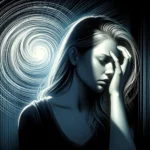
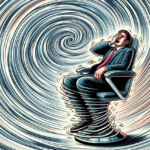
In the case of vestibular migraine, a minority of patients experience vertigo within the 5-60 minute timeframe specified for an aura symptom, and even fewer have vertigo immediately preceding a headache, as required for typical aura with headache. As a result, episodes of Vestibular Migraine cannot be categorized as migraine auras. While more than 60% of patients with migraine with brainstem aura report vertigo, ICHD-3 mandates at least two additional brainstem symptoms along with visual, sensory, or dysphasic aura symptoms for this diagnosis. Less than 10% of Vestibular Migraine patients meet these specific criteria. Consequently, vestibular migraine and migraine with brainstem aura are not synonymous, although individual patients may satisfy diagnostic criteria for both disorders.
Differentiating between Vestibular Migraines and Meniere’s Disease can be challenging due to similar symptoms like vertigo and spatial disorientation. However, key factors set them apart. Vestibular Migraine often links to a migraine history and presents with migraine features. In contrast, Meniere’s Disease involves inner ear dysfunction, leading to hearing-related symptoms like tinnitus. Meniere’s episodes are longer and include distinct changes in hearing.
Professional evaluation and diagnostic tests are essential for accurate diagnosis. Vestibular migraine remains significantly underdiagnosed, as evidenced by a study conducted at a dizziness clinic in Switzerland. In this study, vestibular migraine comprised 20.2% of the diagnoses in young patients, while referring doctors suspected it in only 1.8% of cases.
As with any migraine, it is recommended to consult a doctor or healthcare professional for an official diagnosis. It is also crucial to undergo tests with a doctor at a clinic or hospital if you have recently started experiencing migraines for the first time in order to rule out any serious conditions such as an aneurysm or meningitis.
Sources:
1. Beh, SC. Vestibular Migraine: How to Sort It Out and What to Do About It. Eds: Digre, KB, Friedman, DI. Journal of Neuro-Ophthalmology. 2019; 39:208–219. DOI: 10.1097/WNO.0000000000000791
2. Lempert, T. Vestibular Migraines. Seminars in Neurology. 2013; 33:212-218. DOI : http://dx.doi.org/10.1055/s-0033-1354596
3. ICHD-3
Contact Form– We’re accepting new patients
We would be delighted to assist you and discuss your migraines. No referral is necessary. Simply fill out this form and submit it, and we will get in touch with you.
You are on the right path to your first consultation and relief from migraines!
Or call us:
